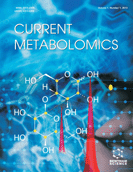Abstract
Background: Non-digestible carbohydrates are degraded by bacterial fermentation in the large intestine to yield Short-Chain Fatty Acids (SCFAs), such as acetate, propionate and butyrate. SCFAs are known to induce beneficial physiological and metabolic effects in the gut and the host. The pathogenesis of Irritable Bowel Disease (IBD) involves alterations or dysbiosis of the normal intestinal bacterial flora with reductions in butyrate producing bacteria noted in several datasets.
Objective: The objective of the study was to develop a Liquid Chromatography (LC-MS) method for the analysis of short chain fatty acids.
Methods: Short Chain Fatty Acids (SCFAs) were coupled to N,N-dimethyl-p-phenylenediamine using a carbodimide coupling. The analysis of the derivatised SCFAs was carried out by using Hydrophilic Interaction Chromatography (HILIC) coupled with an Orbitrap Exactive mass spectrometer. The method was calibrated in the range 0.05-1.6 µg/ml using stable isotope labelled internal standards. The method was applied to urine samples obtained from patients with active Ulcerative Colitis (UC), patients with UC in remission and healthy controls.
Results: Repeat analysis (n=5) of a urine sample gave the following values for concentrations of the SCFAs: acetate 134.7µM (RSD ± 11.2%), propionate 1.68 µM (RSD ±23.9%), butyrate 16.1µM (RSD ± 8.0%). The values obtained for SCFAs in plasma were: acetate 60.3µM(RSD ±9.17%), propionate 6.4 µM (RSD± 30.4%), and butyrate 21.2µM (RSD± 10.7%). The levels of butyrate were higher in patients in remission than in the other two groups. The method was highly sensitive but contamination with SCFAs from the environment, which was below 50 ng, determined the practical LODs. To work at levels < 50 ng, a dedicated laboratory area would be required.
Conclusion: The method described was highly sensitive but limited by background levels of SCFAs in the environment. The results suggest its potential future role in the measurment of SCFAs in UC management. However, a larger cohort would be required to validate its usefulness in the diagnosis and monitoring of UC.
Keywords: Short chain fatty acids, derivatisation, hydrophilic interaction chromatography, ulcerative colitis, IBD, UC.
 46
46 4
4


















